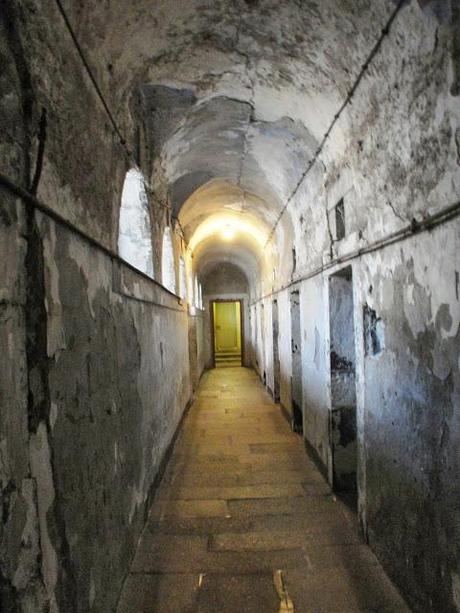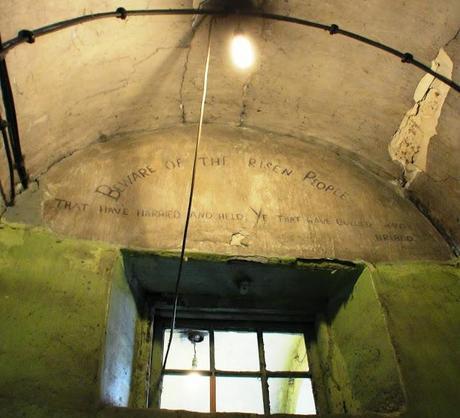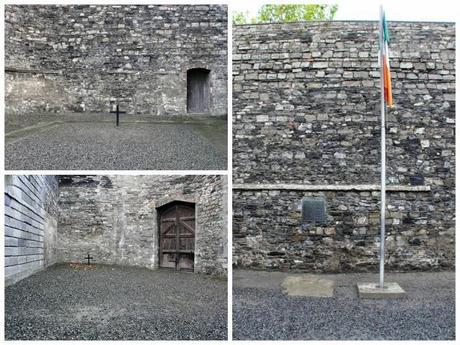
A corridor in the older part of the jail. During the famine the jail would have been so over crowded that prisoners would have slept on straw on the floor in the corridors.
The jail is as synonymous with Irish Nationalism as the GPO, if not more so. Built in 1796 it operated as prison until it was decommissioned in 1924, Eamonn de Valera being it's last prisoner. Men, women and sometimes children as young as six years of age were imprisoned in conditions which were considered horrendous even at the time. In spite of the jail being of huge importance with regard to the social history of Dublin it is more associated with the struggle for Independence.

Beware of the risen people
That have harried and held. Ye that have bullied and bribed.

Joseph Plunkett's cell.
Plunkett married his sweetheart Grace Gifford the night before his execution in the prison chapel. She was later interned in the prison for her part in the Civil War.
Of the fourteen leaders of The Rising thirteen of them were held, tried and executed in the jail. The fourteenth, James Connolly, had been severely injured during the fighting and was in a local hospital. He was transported to the jail on the day of his execution. We were shown the cells they stayed in, we seen the chapel they prayed in and finally their execution spots. Two black crosses in the yard mark the execution spots. On the right is where thirteen of the leaders were shot. On the left, closer to the gate, marks the spot where Connolly was shot sitting in a chair. He was unable to stand, or in fact make it to the primary execution spot, due to his injuries.

The execution yard.
I loved the tour, sombre and all as it was, the building has been preserved in such a way that it's extremely evocative of times passed. You can imagine, without much effort, Connolly or Pearse sitting in the cells as you pass them. Kilmainham is on my list of "must see" places in Dublin. I think it's a fantastic, yet horrifying, testament to our history and well worth a visit for both local and visitors alike.
Kilmainham Gaol
Inchicore Road
Kilmainham
Dublin 8
01 453 2037
Website

If you visit the jail and you find it familiar perhaps you've seen it on the silver screen? Kilmainham has been used in movies such as In the Name of the Father and Michael Collins. More recently it was used in the filming of the BBC show Ripper Street.

